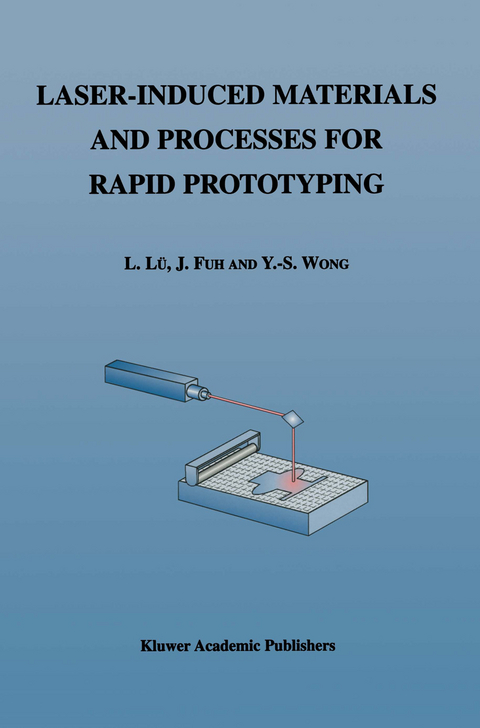
Laser-Induced Materials and Processes for Rapid Prototyping
Springer-Verlag New York Inc.
978-1-4613-5569-4 (ISBN)
1 Introduction.- 1.1 Overview of rapid prototyping and manufacturing.- 1.2 Laser-induced rapid prototyping.- 1.3 RP process characterization and modeling.- 1.4 RP technology trends.- 1.5 References.- 2 Fundamentals of Laser-lithography Processes.- 2.1 Laser-lithography.- 2.2 Laser scanning in LL process.- 2.3 Fundamental relationships.- 2.4 Characteristics of photo-polymerization.- 2.5 Summary.- 2.6 References.- 3 Material Characterization of Laser-lithography Built Parts.- 3.1 Mechanical properties of LL parts.- 3.2 Analyses of degree of curing.- 3.3 Distortion analysis by Moire method.- 3.4 Summary.- 3.5 References.- 4 Improvements of Mechanical Properties by Reinforcements.- 4.1 Introduction.- 4.2 Fiber-reinforced photo-polymer.- 4.3 AEROSIL-mixed photo-polymer.- 4.4 Improvements in LL-process.- 4.5 Summary.- 4.6 References.- 5 Selective Laser Sintering.- 5.1 Principle of laser sintering.- 5.2 Process of selective laser sintering.- 5.3 Liquid phase sintering in SLS.- 5.4 Commercial applications.- 5.5 Metal powders for laser sintering.- 5.6 Densification.- 5.7 Mechanical property.- 5.8 Summary.- 5.9 References.- 6 Metal-Based System via Laser Melting.- 6.1 Selective laser melting process.- 6.2 Metal powders.- 6.3 Composites.- 6.4 Summary.- 6.5 References.- 7 Laser Sintering of Ceramics.- 7.1 Fabrication of ceramic parts using SLS.- 7.2 SLS of ceramic parts.- 7.3 Summary.- 7.4 References.- 8 Characterization, Modeling and Optimization.- 8.1 Introduction.- 8.2 Modeling of RP part fabrication.- 8.3 Optimal orientation.- 8.4 Direct slicing of CAD models.- 8.5 Decision support for process optimization and selection.- 8.6 Summary.- 8.7 References.- 9 Rapid Tooling and Its Applications.- 9.1 Rapid tooling development.- 9.2 Rapid tooling techniques and applications.- 9.3 RT for injection molding - a case study.- 9.4 Application to EDM electrode fabrication.- 9.5 Summary.- 9.6 References.
| Zusatzinfo | 128 Illustrations, black and white; XVI, 267 p. 128 illus. |
|---|---|
| Verlagsort | New York, NY |
| Sprache | englisch |
| Maße | 155 x 235 mm |
| Themenwelt | Technik ► Elektrotechnik / Energietechnik |
| Technik ► Maschinenbau | |
| ISBN-10 | 1-4613-5569-9 / 1461355699 |
| ISBN-13 | 978-1-4613-5569-4 / 9781461355694 |
| Zustand | Neuware |
| Haben Sie eine Frage zum Produkt? |
aus dem Bereich


